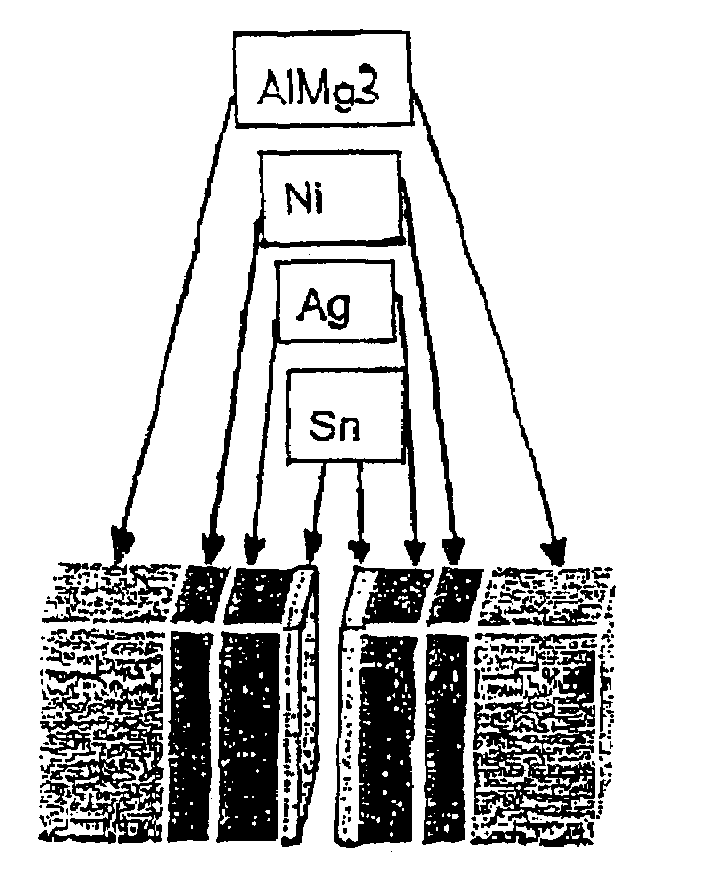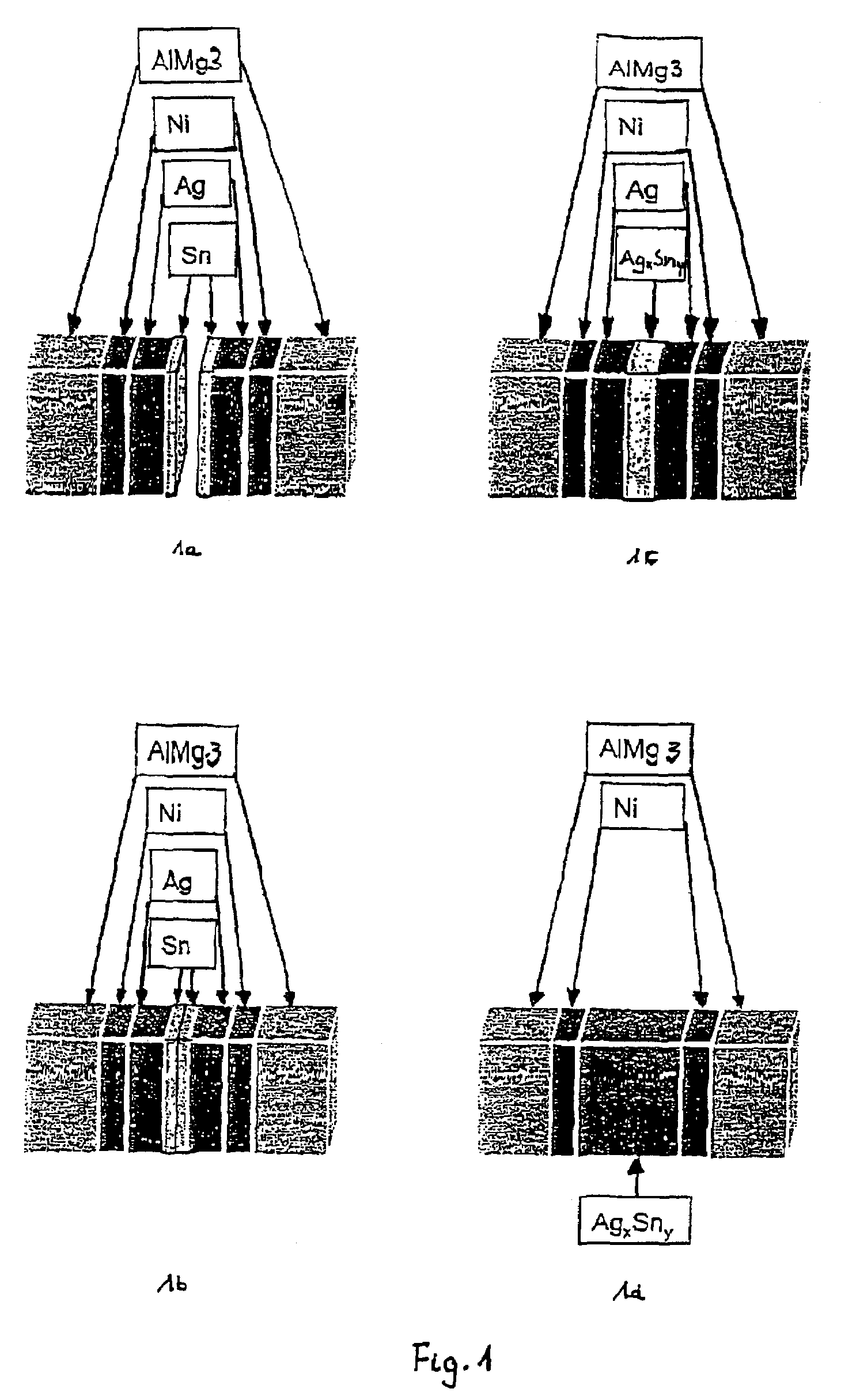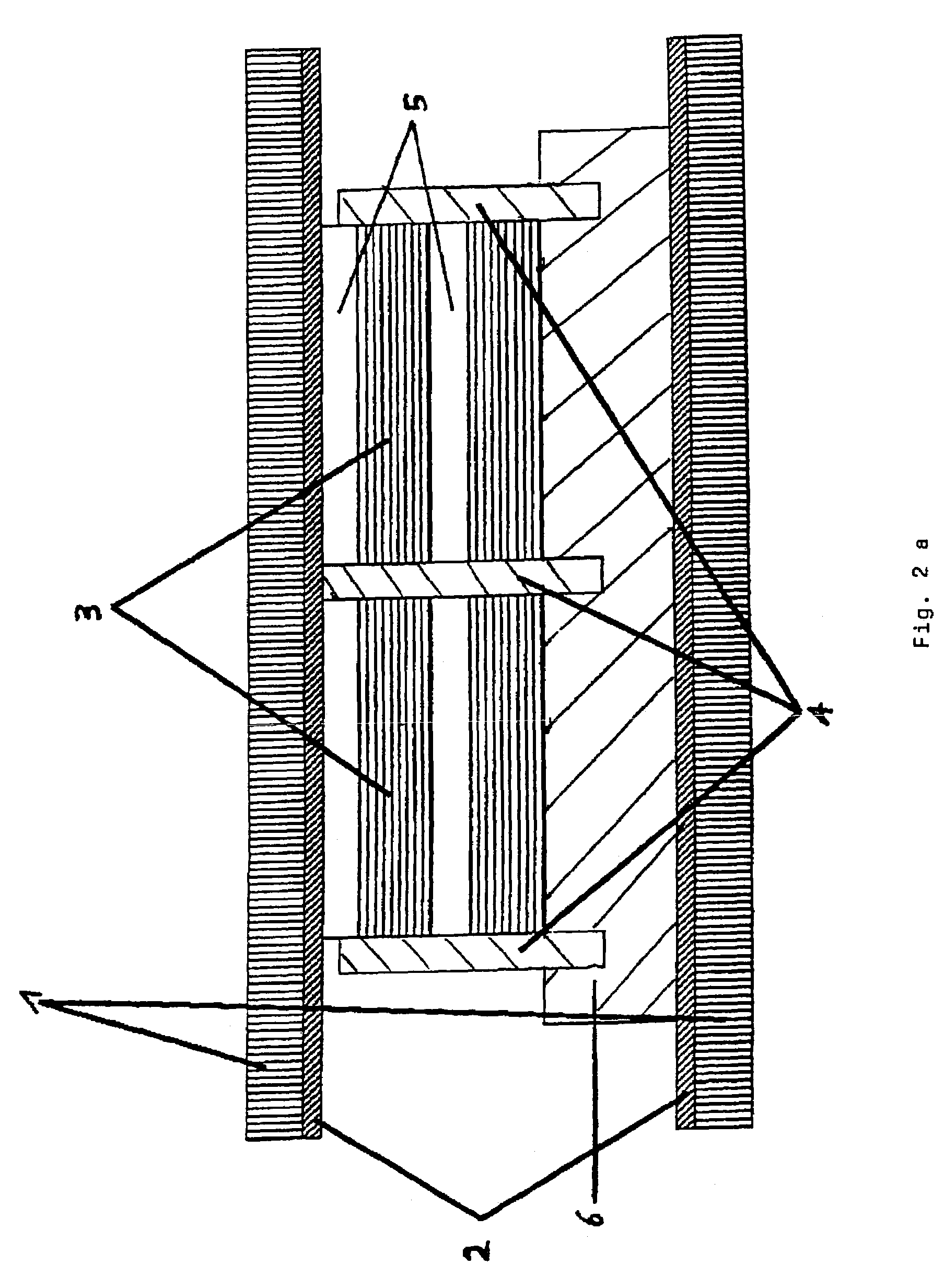Method of connecting module layers suitable for the production of microstructure modules and a microstructure module
a technology of microstructure modules and layers, applied in the direction of microstructure technology, microstructure devices, microstructure components, etc., can solve the problems of insufficient cost-effectiveness and insufficient reliability of known manufacturing methods for microstructure components, and achieve low component offset, low cost, and sufficient flectional strength.
- Summary
- Abstract
- Description
- Claims
- Application Information
AI Technical Summary
Benefits of technology
Problems solved by technology
Method used
Image
Examples
Embodiment Construction
[0146]The invention is explained in greater detail in the following.
[0147]FIG. 2a illustrates a cross-section of a soldering / brazing structure with microstructure components 3. The microcomponents 3 are registered via registration pins 4 mounted in the bottom plate 6. Pressure is applied via pressure tools 1, whereby the pressure cushions 2 compensate heights between the individual microcomponents 3 and thus enable uniform pressure distribution. FIG. 2b is a top-view of the soldering / brazing structure. It can be seen that the registration pins 4 are mounted on the bottom plate 6. The microcomponents are labeled with the reference number 3.
[0148]FIG. 3 is a cross-sectional side elevation of a template 7 for registering microstructure components 3. The microstructure components 3 are separated from one another in the template 7 by intermediate plates 5. Pressure is applied via pressure tools 1, whereby the pressure cushions 2 compensate heights between the individual microcomponents 3...
PUM
| Property | Measurement | Unit |
|---|---|---|
| temperature | aaaaa | aaaaa |
| temperatures | aaaaa | aaaaa |
| melting point | aaaaa | aaaaa |
Abstract
Description
Claims
Application Information
 Login to View More
Login to View More - R&D
- Intellectual Property
- Life Sciences
- Materials
- Tech Scout
- Unparalleled Data Quality
- Higher Quality Content
- 60% Fewer Hallucinations
Browse by: Latest US Patents, China's latest patents, Technical Efficacy Thesaurus, Application Domain, Technology Topic, Popular Technical Reports.
© 2025 PatSnap. All rights reserved.Legal|Privacy policy|Modern Slavery Act Transparency Statement|Sitemap|About US| Contact US: help@patsnap.com



